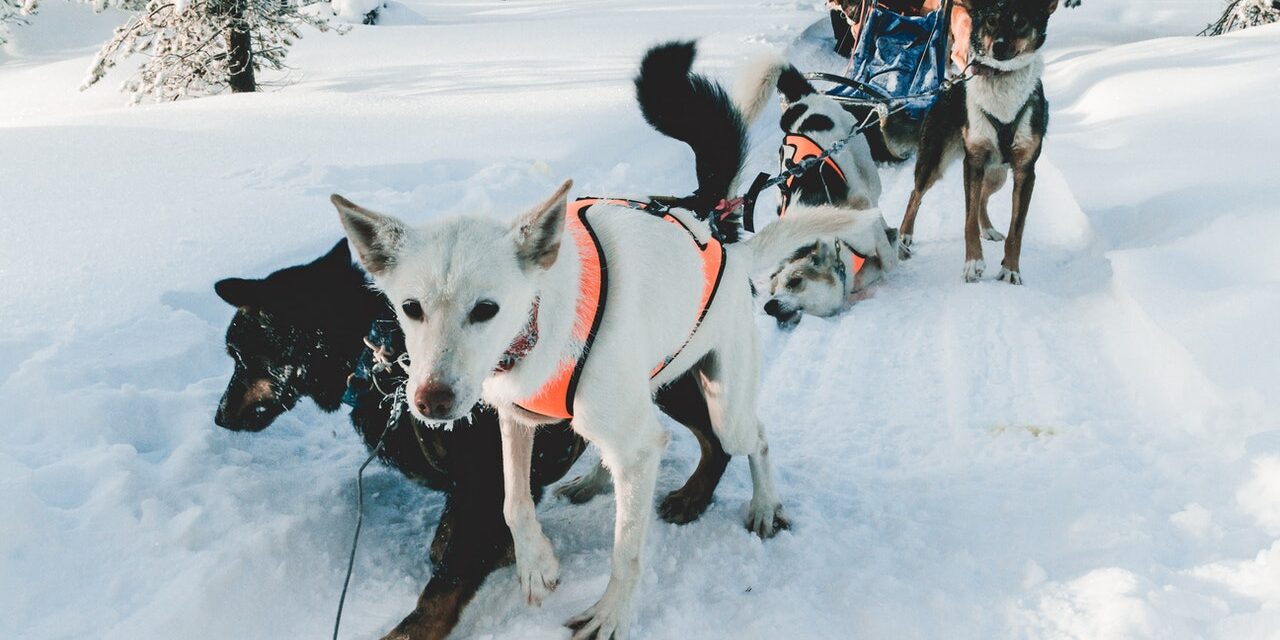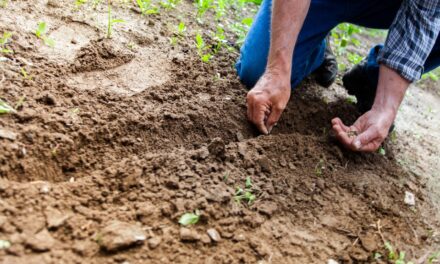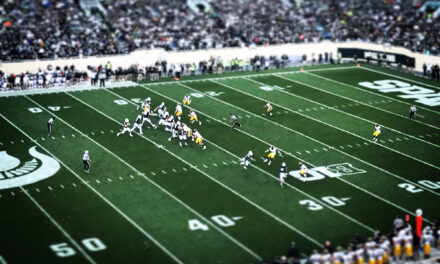Name: Laurie Niedermayer
Kennel: Nakitsilik
Birthplace: Lachine, Quebec
Current Residence: Bridge Lake, BC
Occupation: tour operator, chief cook & poop scooper
Introduction To Our Musher
I have a very varied background and eclectic tastes in everything from food to art to music and participate in as many different pastimes as I can work in. My soapbox in life is animal care and rescue and I feel I have been truly very blessed and lucky to be able to work my hobby for a living.
I grew up in North/Central BC and my hubby grew up in the Okanagan region of BC. we met through mutual friends in 2002. The first thing that Tom (my hubby said) was ‘If this is going to go anywhere – don’t expect me to give up my truck.” and I responded with ” well don’t expect me to give up my dogs” Two years later he sold his truck and we bought the property we now live on and we have expanded the kennel!
I was the kind of kid that found every stray dog in the area & brought it home – much to my parent’s chagrin! As an adult I rescued my first siberian in 1991 and although we had always owned husky crosses – it wasn’t until this first boy came into my life that I found a breed of dog that I truly understood. I currently live in a very rural area – an hour from the nearest town with my husband – the love of my life and best friend. We share a mutual love of all things outdoorsy and my hubby Tom, is one of those rare individuals that has a natural affinity for all animals. I have not seen one yet – of any breed or species that doesn’t come sidling up to him for affection & attention. Our basic philosophy with the animals and life in general is respect, kindness & laughter. Although we do get firm when we have to – both of us truly love the dogs – and they love us back. Quite often when we are doing kennel chores and work together I will find that my hubby has disappeared – I can usually find him in one of the pens cuddling and loving & playing with the dogs or puppies.
The Background of Our Musher
How did you get involved with the sport of dog sledding?
By accident. The breeder of my first siberian puppy suggested I check out the cart races held locally.
Could you tell us about your first mushing adventure?
I would have to say that my first time behind a team of dogs was when I got to ride a cart to the start line of a race. I was terrified. The noise, the excitement, the panic that someone would lose their grip on the team and I would be stuck there – without a clue! Then several months after that I was actually able to hook up my dogs and take them out for a cart run – it wasn’t very successful – I think we made it half a mile before I could actually breath again (the noise, the excitement, the terror!). These were my babies, they slept on the bed with me and we were running like demons… until a bird or a leaf blew across the trail – then I just crashed! And silly me – here I am 16 years later!
Who have been your biggest supports during your mushing years?
I have been very fortunate in that the first two people to really encourage me to try racing and working my dogs were Lila Wheatley and Mary Reidinger from the NWSDA. The first year I raced, they both just packed my team & I up and took us to the races and were very sure that I could do it. From the beginning, Becky & Joe Loveless from Roy Washington, have been an inspiring, supportive and formidable duo in keeping me going. I don’t think they really know it either. I really didn’t have anyone to mentor me – I only connected with people at the cart races and had to use what little bits I could pick up there to try to learn. And learn I did…. I was also very lucky to meet some wonderful people who were just as wild about wanting to do this as I was – and we banged ideas, heads, gear & dogs around until we got it right.
How long have you been addicted to mushing?
Since 1991.
What has been your greatest accomplishment in your dog sledding career?
I’d love to say doing the movies we have done, or the races we have run or organize, but IMHO my greatest accomplishment is the happy, silly, fun loving dogs that I have either rescued and turned around or bred on my own. Every single one of my dogs is a sucky, cuddly marshmallow. But driven to work hard. That they are so loving and happy is the best accomplishment in the world.
What is it about dog sledding that makes you enjoy it so much?
The freedom, the peace, the bond that develops with working your dogs.
Do you have any other pets besides sled dogs?
We have two house dogs- a lab cross we inherited from my brother and a golden retriever pup, two cats and various chickens and turkeys – but I’d hardly call them pets….
Are you married and do you have children?
Very happily married, no kids.
What hobbies, sports or activities do you enjoy doing besides dog sledding?
Is there any other hobby? In my spare time (ha ha) I like to spin the dog’s fur, knit, garden – we raise all our own produce/meat, I am very involved with a couple of women’s agricultural education groups and I do act as a referral for rescue.
Maintaining A Kennel
How is your kennel set up?
We don’t have a kennel – we have a penitentiary! The kennel is approx 200 ft x 300 ft.x 8 ft high chain link. kennel runs are at minimum 20 x 20 ft and house one or two dogs. The largest one we have is 60ft x 40 ft. all the kennels house from 2 – 8 dogs and they are usually kept in the groups they run in. Each kennel gate is separated into an 18″ lower gate and a regular walk in gate. The lower/raised man gate is so that we don’t have to worry about having to dig out the kennels in the event of heavy snow. In the summer it is a pain to climb over the lower gate – but in the winter it is a God-send. We do have a couple of long chain tie outs – so we have somewhere to put some of the girls when they are in season and we have no spare room in the smaller kennels.Oh and one escape artist who can actually JUMP the 8 foot high chain link!
How many lucky dogs currently enjoy your kennel?
We have 80 adults and 19 puppies. Of the adults 10 are retired and living out their lives comfortably, and we have another 10 likely to be retiring after this season – which is why I bred so many pups this year!
What is the feeding routine for your dogs?
We use Taplow/Firstmate Feeds Extreme diet. We have been on it for just shy of 2 years and the dogs are doing fabulously. It is a high protein (36/26) fish based feed made here in BC. Recovery, stamina, endurance, coats and puppies are all incredible. In the summer most of my dogs won’t eat in the heat – so they get fed once a day while it is hot. Once temps start to cool down – we go to twice a day feedings with lots of water and maintain that throughout the winter. They always have big buckets of water in each kennel and it is fresh every day. The only additive is a tsp of glucosamine/MSM for all the dogs and a tbsp of diatomaceous earth in their feed daily for the summer months as a mechanical preventive for worms.
What is your kennel philosophy?
Love, respect, kindness & laughter. I have always believed that since our dogs are pack animals – keeping them together in family groups is good for their social skills. So far in 16 years – it has worked beautifully for me. We rarely have any fights – the exceptions being girls in season or some hapless critter unfortunate enough to get into a kennel. The dogs seem to exercise themselves a lot more than the ones on chains – and have worked out all their issues in their day to day living. Rarely is there any yelling or corrections, and I expect the dogs to behave and live here happily and they do. We don’t breed a lot or often – rarely for sale – and usually only for ourselves.
What is important to you when maintaining a kennel of working dogs?
Gosh – where do I start? Cleanliness & proper husbandry. There is NO excuse for it (proper care) to not be done! Our dog’s dishes get washed out daily with soap & water, water buckets are scrubbed out at least once a week, scooping is done once a day in the summer and twice a day in winter. Dogs nails get done at minimum once every two months. More often if I have help in the kennel. Once our kennel building is finished – annual baths will be occurring for everybody! There is a house for each dog in every kennel and straw gets put in the houses in the winter for extra heat – although the dogs generally pull it OUT of as fast as I can put it in!
If I were a dog in your kennel, what would my day be like?
Starting as soon as it is light enough to see – the dogs race around, playing tag, leaping and bounding and just generally having fun. Around 6:30 in the morning – it is time to get chained up for feeding, and feed is then distributed, scooping and watering happens and then the dogs are unchained and choose to either lie around or play. That theme recurs during the day all day in the warm months. In the fall/winter the dogs get a quick snack in the mornings and then we either load up to drive into town for tours or we get ready to head out on the trail right from the kennel. At night when we get back from running tours – supper is then served and the dogs hang out or play as they choose. Year round my elderly mother in law will take a couple of the retired girls for walks, she also does the bulk of the grooming. Weekends -when there is always extra help – the dogs get turned out to run around the inside ‘playing field’ of the penitentiary & grooming, nails or other husbandry related stuff happens. Sometimes they even just get a big cuddle and wrestle with dad – when we have all day to just hang out and play. Otherwise daily at feeding time everybody gets a cuddle and a wrestle.
Working With the Dogs
What physical attributes do you try and produce in one of your average sled dogs?
I have always tried to find structurally sound animals – and that does cause some question – because that is open to everyone’s personal interpretation. My opinion on that has changed a bit the longer I am in the sport and the longer distances I do every year. I have seen many dogs that just structurally should not be able to do the job they do – but then there they are on some of the top teams. Personally I like to see a slightly longer leg and back, no over-angulation, and a decent amount of bone.
What breeds do you currently mush with?
Siberian huskies. Although I have played with many other dogs – sibes have my heart.
What is the demeanor like in all of your sled dogs?
My dogs have heart and a strong drive and willingness to work for me. They are all real marshmallows – lovers not fighters. I have very little problem with aggression in my kennel and I work really hard with each dog to make sure that they are well adjusted. I have several dogs that were rescued, harshly treated or have really soft temperaments and over time have managed to turn them into confident and hard working animals. I have found that they work for me not out of fear but out of what I would attribute to love and respect.
Please describe your vision of a perfect sled dog.
A stuffed husky! actually – Siberians.. LOL
The Magical World of Puppies
How do you house your puppies?
They are kept in 20 x 30ft kennels with their moms for at least 8 weeks. Sometimes longer – depending on the mom. At 8 – 10 weeks I will move one of my older, gentler dogs in to tune the kids up – and the oldsters do a really great job of teaching the puppies manners.
During the first months of a puppy’s life, what is their training like? What do you work on with them?
Right from minute one we handle and cuddle and play with the pups. Basic manners & obedience is something that is ongoing (but I don’t pressure them into doing) . I don’t do any harness training with them until they are at least 8 months old and then it is only quick short sessions to get them used to the harness and the pull. After they are a year old they get hooked up next to one of my calmer, older dogs and taken for short runs. This works for us because, from day one – they are able to watch the adults leave the kennel daily on tours or training runs and while they have no clue what all the excitement is about they are really keen to get out and do it. I have never had a pup balk at running in harness using this method.
What do you look for in your breeding pair?
Working ability/ethics, leading qualities (all my breeding pairs are leaders), excellent conformation/structure and good, happy temperaments.
What is your favorite part about raising puppies?
From birth to 8 weeks. I love the development and growth they go through. The path of discovery and personality development. I could spend days with them at this stage. And this may sound weird – but as the pups grow – I get a kick out of the first little poops in the kennel that the mom doesn’t clean up – it means they are finally growing up!
On the trail…
What gear/equipment do you always keep in your sled bag?
First aid kit, water for the dogs and ourselves, lunch, spare harnesses, necklines, carabiners, 2-way radios & the camera.
Could you describe what your typical wardrobe/clothing system consists of?
Layers. fleece leggings and shirts, merino wool socks, a windproof outer layer and Baffin’s ‘Mushers’ boots rated for -70F.
Describe the food that you find easiest and most enjoyable for yourself on the trail, and any tips on how to prepare food for longer trips, etc…
For our tours we generally make up sandwiches, or I will have the fixins available and folks can mix & match their own. Usually hot soup, hot chocolate and lots of water. Cookies and muffins don’t usually hold up too well with all the jostling the sleds go through.
What type of run/rest schedule do you try and follow?
Again because we do tours – the dogs will do from 20 – 40 miles per day and I try to alternate them so the same dogs are not working all the time. basically a one day on one day off cycle.
Any other tips for the trail?
Be safe. have fun, know your trails.
Training: The Hard Part
What is your way of thinking when it comes to racing and training?
Persevere. And take the time to do it right. I have a few dogs in my group that didn’t benefit from this more relaxed way of doing things – I made all the mistakes that everyone tends to make when you are starting out. I did not have the luxury of taking in and getting rid of dogs if they worked or not – I’ve been a very small operation (until the last two years) and once a dog comes to stay with me it is here for life. If there are problems I work my way through them – and with enough patience and praise we usually do get through things.
Could you describe your yearly training program?
Once the snow is gone – the dogs get to hang out – and as and when time permit I will do some one on one harness or obedience work with them. Once temps cool down in the fall we start out team by team with all the basics. Every year an issue will raise itself with each team and so I will work on those issues with all the teams- to make sure that they all ‘get it’. By far our most important part of training is our conditioning and pulling ability.
What tools are most important to you when training your sled dogs?
Praise, love and play. Oh and a pocket full of treats doesn’t hurt either! Seriously – the ATV has become the most indispensable tool of all. I can control speed, pull and stop if I need to in a hurry. Which comes in handy when we meet a vehicle, or wildlife on the trail.
What are your training goals each year; including mileage, speed, and attitude?
We must be able to do the 40 miles with ease. Pulling ability and no shirking or goofing off. Speeds – we maintain an average of 16 kms/10mph for our tours. The dogs must be willing to work for and through anything.
Racing: Oh Glorious Racing!
Do you race? If so, what races?
Not often.. since we have to earn it to spend it! We do support the local Jack Gawthorn race here – since I am the organizer, and we plan to do the Gold Rush Mail Run, but no plans for any distance races this year – possibly for 2008 – depends on what comes our way.
What are your goals during the racing season?
To place reasonably well. I know in sprints I don’t really train and run the dogs for that specifically – so when I hook up my faster touring dogs and we come in in the middle of the pack I am quite happy..
Could you tell us about your first race?
Probably my most memorable experience with sledding had to be at my very first sled race – in Falkland BC in 1999. Although I had been competing in cart racing and placing very well since 1996 – I was anxious to try something different. Living in the lower mainland area of BC also did not lend itself to much snow running – they get tons of rain and very little snow – so with only three or four sled runs in I packed up my five dogs – four adults and a pup- and headed to Falkland. I had a new sled, new snow hook, and four dogs that had been working very well together up until then. All the things you should never try at a race – I tried… see – we ALL make the same mistakes!
I had chosen to run in the novice class – not because I didn’t think my dogs could do it – but because I wasn’t sure that I could –
Well start time came and I was so scared – I couldn’t think. We were harnessed up and at the start line and all I could think of was that I couldn’t do it – I wasn’t ready – and oh God – what was I doing there?? Well – before I could change my mind, we were off and running, and after my heart dropped back into my chest – we were zipping along very nicely. In the last ¼ mile of the race, my lead male decided that he didn’t want to run anymore, and stopped, sitting back on the neckline of the male behind him and started growling. I was off the sled, set the snow hook and making my way to the front to give him what for. Fortunately I knew enough by this time, not to let go of the sled, and was ever so grateful that I had not – when I touched the gangling – he looked at me and took off like a bullet – because he knew he was going to catch heck when I got to him. So, as he bolted – the snow hook – that I had thought I set – let go, and I began bumping along the trail beside the sled and doing a terrible Dick Van Dyke impression, until the dogs decided that they did not like to be dragging all this extra weight. We stopped, I got up, flipped the sled over and tried to get on the runners, while they picked up the pace and continued running. Poor old Dick had nothing on me as I flailed along, trying to keep the sled upright & get back on the runners, the snow hook kept bouncing and hitting me in the shin and I had almost given up – when suddenly, magically I was back upright, holding on for dear life and we sailed across the finish line like any old pro. I was still running on adrenalin (and consequently no sleep) the next day – and placed second in my class overall.
How do you decide which dogs make the race team?
Speed, desire and ability
If you could, what are your racing strengths and weaknesses?
I hate sprinting – I admit to being a bit frightened of the speeds. I prefer longer distances where I can really enjoy the run and work with the team.
How do you decide which races you will be entering during the racing season?
Time, distance, and money.
What has been your most memorable racing experience?
See above “First Race experience!”
What Does the Future Hold?
What do you hope to accomplish with the dog sledding sport?
Being able to share our lifestyle and passion with people from all over the world continues to be one of my main goals. Being known for the working ability and friendliness of my dogs.
What changes do you hope dog sledding makes in the near future?
I think that it is becoming more and more prominent worldwide as people learn about the sport. Ultimately I would like to see it continue to grow, with more focus on education and animal care. With hard work and dedication I think we can see this happen. I’d like to see more sledding events and not just for sprint racers. I think as a group – we all have to take responsibility for and ensure accountability within the sport. We all need to be more proactive and open with regard to information about our dogs health and problems, and we must all take a stand against those who would breed indiscriminately (puppy mills) in our sport, and against those who do not look after their animals properly.
To the beginning musher, what advice would you give?
Don’t do it! Unless you have the ability to commit to your animals for the duration of their lives, and are able to look after them properly, keeping them clean, healthy & happy – don’t do it. Unless you are willing to give up any spare cash & time, family events/holidays for the sport – for training, vet care, racing and enjoying – don’t do it
Take your time and do not let your enthusiasm take over common sense. You cannot expect your lovable bed hogging, couch potato to become an Iditarod contender in one season. Take the time to really educate yourself in what you are getting into, and do not leap into trying to run more dogs than you are ready to. If you do not have the time and devotion to give to large numbers of dogs – then stick to one or two until you know if you are really cut out for this. There is nothing more tragic than getting in over your head with numbers of dogs and having the animals suffer for it. Find a mentor or a few people in your area that are interested in the sport and work together, to learn and train. And for God’s sake ENJOY your dogs, when it stops being fun and all you can see is the ribbon, the award or the prestige or winning – then it is time to step back and re-evaluate what is happening – without the dogs it is just you – and you sure can’t run a sled race without a team.
If mushers were to do something to perpetuate the dog sledding sport, what would that be?
I think that as musher’s we all need to realize that every time we are out in public with our animals, we are making a statement. Whether we realize it or not – every thing we do that identifies us with this sport is under excessive scrutiny from Joe Public and animal rights groups. As such, I think it very important that our animals, our gear & our deportment be above reproach. Instead of sniping or growling at people who come up and ask you questions when you are racing, working or running your dogs – I think it very important that we take the time to answer those questions, and explain things, no matter how dumb the question may be. The most important thing we can do as a group is to educate ourselves, and then educate the public. Get involved with your local schools and teach the kids what dogsledding or ski-joring is all about, get involved with public fairs, displays, pet fairs and EDUCATE the hell out of the public… help get us out of the closet and into mainstream society. Let everyone know that we do not whip our dogs, or beat them, or force them to do something they hate to do…Let’s proudly explain & exhibit our wonderful working companions and bring mushing into this century!
Anything else for the mushing community to hear?
Finally – I guess I would have to say that getting involved in this amazing sport has been very good for me. I am fortunate enough now, to be able to work my dogs daily, and to be able to share my love of the breed and the sport with many people by doing sled tours and training workshops. If you follow your heart, open your ears & mind, close your mouth, and treat your animals with the respect they deserve and remember to have fun – you will go a long way in the sport.





